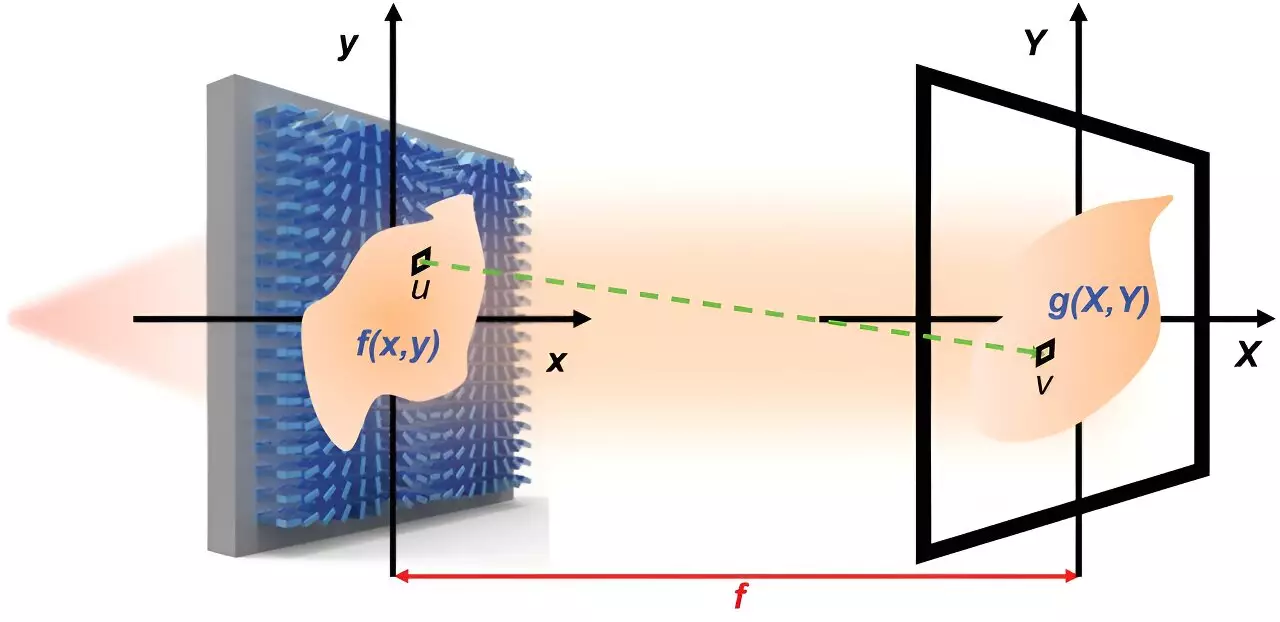In the realm of artificial intelligence (AI), the processing power required to analyze images and identify objects has always been a challenge. Traditional methods often struggle with high energy consumption, slow processing, and limited bandwidth. However, a breakthrough invention by Penn State electrical engineering researchers offers a promising solution. By leveraging the concept of metasurfaces, these researchers have developed an optical element that can revolutionize image processing.
Led by associate professor Xingjie Ni, the team at Penn State has created a metasurface that mimics the instantaneous image processing power of the human eye. This innovative optical element operates similarly to a glass slide, but utilizes tiny nanostructures placed at different angles to manipulate light. The researchers’ invention, published in Nature Communications, has the potential to transform the way we capture and process images.
One of the key advantages of the metasurface lies in its ability to preprocess and transform images before they are captured by a camera. This preprocessing stage enables a computer, equipped with artificial intelligence, to process images with minimal power and data bandwidth. By converting images from the Cartesian coordinate system to the log-polar system, the metasurface arranges pixels in a bullseye-like distribution. This arrangement ensures that the central, focused features of an image are captured with denser pixels, while peripheral regions are represented with sparser pixels.
By adopting the log-polar coordinate system, the metasurface optimizes data bandwidth and reduces the computational load on AI systems. Similar to the arrangement of light receptors inside the human eye, this innovative optical element prioritizes the essential aspects of a photo, allowing them to come through clearly. Less important details remain less in focus, resulting in significant savings in data bandwidth. The metasurface, placed in front of a camera, functions by converting the image into log-polar coordinates, which are then digitalized by the camera and transferred to a computer.
The remarkable aspect of the metasurface lies in its simplicity and efficiency. It operates using nanostructures that bend light, eliminating the need for any external power source. Leveraging the intrinsic speed of light, this optical element can process images instantaneously, revolutionizing the speed and efficiency of image processing.
Apart from its energy and bandwidth-saving capabilities, the metasurface also enhances the robustness of AI applications. By preprocessing images and making them resistant to scale and rotation changes, the metasurface aids AI systems in recognizing objects consistently. This capability is particularly useful when dealing with varying object sizes or orientations, as the preprocessed images allow for more accurate recognition.
The potential applications of the metasurface are vast and diverse. One of the most exciting possibilities lies in target tracking and surveillance. By using different metasurfaces in front of multiple cameras, researchers can easily track the movement of objects such as cars across a city. This technology could greatly aid in scenarios where it is essential to recognize the same car from different street view cameras. Additionally, the metasurface opens up new avenues in various AI-related fields, including robotics, medical imaging, and augmented reality.
The creation of the metasurface by Penn State electrical engineering researchers marks a significant advancement in image processing. By harnessing the power of light and nanostructures, this optical element streamlines image preprocessing, reducing energy consumption and optimizing data bandwidth. The metasurface’s ability to convert images into log-polar coordinates enhances the performance of AI systems and opens up new possibilities for applications in target tracking, surveillance, and beyond. With ongoing research and development, the future looks promising for metasurface technology, revolutionizing the way we perceive and process images.


Leave a Reply